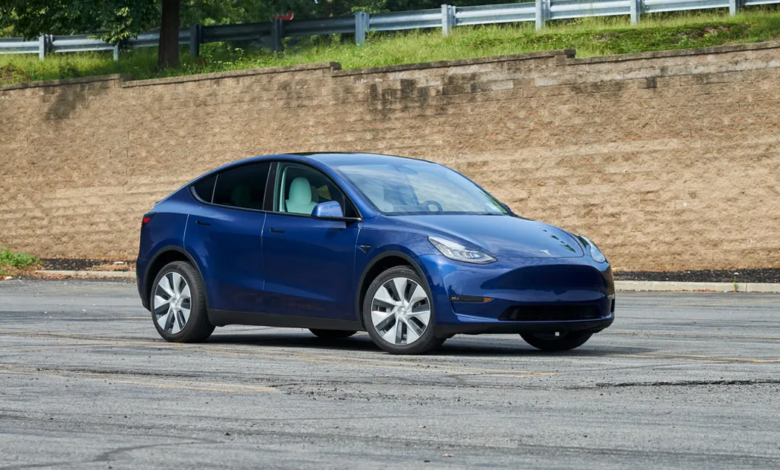Tesla Reports Record Revenue for 2022, With 1.31 Million EVs Sold

Tesla’s average transaction price declined, but the company still sold more cars and made more money than before. The manufacturer is increasingly focusing on software to increase profits.
Thanks to recent price cuts for its lineup of electric sedans and SUVs, Tesla finished 2022 strong. The manufacturer delivered 405,278 electric cars in the fourth quarter, up from 343,830 deliveries the prior quarter, according to the full-year 2022 results statement, which was announced at the market’s close on Wednesday. With this, Tesla will have delivered a total of 1.31 million vehicles in 2022, a new high for the brand and a 40% increase year over year. However, this falls just short of the company’s own target of 1.4 million deliveries.
The average sale price for Tesla automobiles has “typically been on a lower slope for many years,” according to the company’s earnings report. Late last year, the automaker slashed prices on its electric vehicle lineup by up to 20%. This was done partly in response to weaker demand, but it was also done to bring the Model 3 and Model Y under the $55,000 qualification threshold for the $7,500 federal tax credit for electric sedans included in the Inflation Reduction Act of last year.
Read more: What EV Charging Standards Proposed by Biden Actually Mean
Although Elon Musk said that more affordable Tesla are a good thing, investors weren’t overly pleased with the price reduction.
Tesla’s CEO stated on a call with investors on Wednesday that “it’s always been our goal to make automobiles affordable for as many people as possible.” “Therefore, I’m delighted that we may do so.”
The company claims that between 2017 and 2022, the average retail price of a Tesla decreased by half and is expected to do so again soon. That’s partly because of price reductions, but primarily because the more affordable Models 3 and Y now account for the majority of Tesla’s manufacturing and deliveries. They made up just over 50% of Tesla’s 254,530 sales in 2018, and now they will account for nearly 95% of the 1.31 million Tesla vehicles shipped in 2022.
Despite the falling average transaction price, Tesla claimed that between 2017 and 2022, its operating margins rose from a negative 14% to a positive 17%. It attributed this shift to cheaper-to-produce models as well as its investment in regionalized, more efficient facilities. Tesla stated earlier this week that it would invest an additional $3.6 billion in its Nevada Gigafactory, expanding it by two new factories: A 100GWh factory will be able to produce 4680 battery cells annually, which is enough to power up to 1.5 million light duty electric vehicles. Tesla’s fully electric commercial vehicle will eventually be made in a high-volume Semi facility.
Tesla predicts that some of the void left by lower transaction prices will be filled by software-related income, after-sales, and services. According to the investor deck, “over time, we expect our hardware-related earnings to be accompanied by an acceleration of software-related profits” even though “we continue to execute on innovations to reduce the cost of production and operations.”
While the Full Self-Driving Beta launch last year wasn’t without controversy, it was a key milestone in the automaker’s strategy to boost software-related earnings. Around 400,000 customers in the US and Canada who paid for the driver-assistance software received it. FSD will cost an additional $15,000 after a price increase in September 2022. (As always, we point you that there are no self-driving automobiles available for purchase right now.)
Tesla is actually one of the world’s top AI firms, both on the software side and the hardware side, Musk claimed on the investor call. “I’ve always maintained that Tesla is as much a software company as a hardware company,” Musk said. “This is the thing that has order-of-magnitude promise for Tesla as we come closer and closer to tackling real world AI.”
In addition, the paper states that growth in its fleets for mobile and brick-and-mortar services as well as revenue from paid supercharging contribute to “most of the profit in 2022.” Tesla also experienced growth in its energy storage (152%) and solar energy (18%) businesses, which are unrelated to the auto industry. Compared to $2.32 billion, or 68 cents per share, in the fourth quarter, Tesla reported a net profit of $3.7 billion, or $1.07 per share, for the whole year. Up 37.2% to $24.4 billion, revenue increased.
In the years to come, Tesla anticipates continued growth, projecting 1.8 million vehicles sold in 2023. Production of the long-awaited Cybertruck is anticipated to start later this year in Texas. Additional information will be provided at the automaker’s Investor Day event on March 1. The Tesla Semi has entered pilot production in Nevada, and PepsiCo received the first few units late last year.











